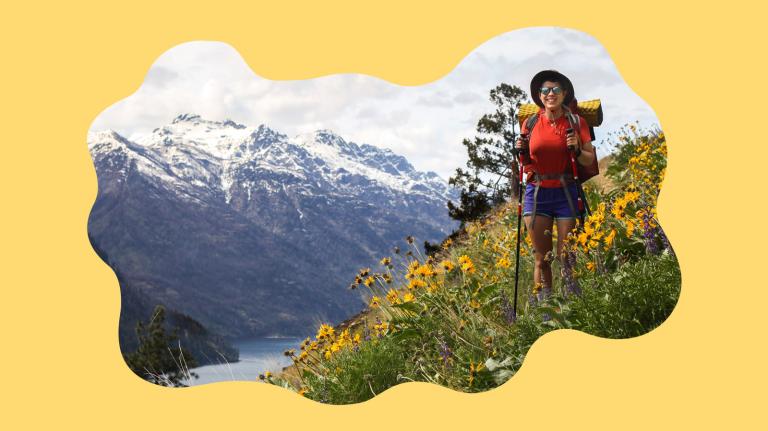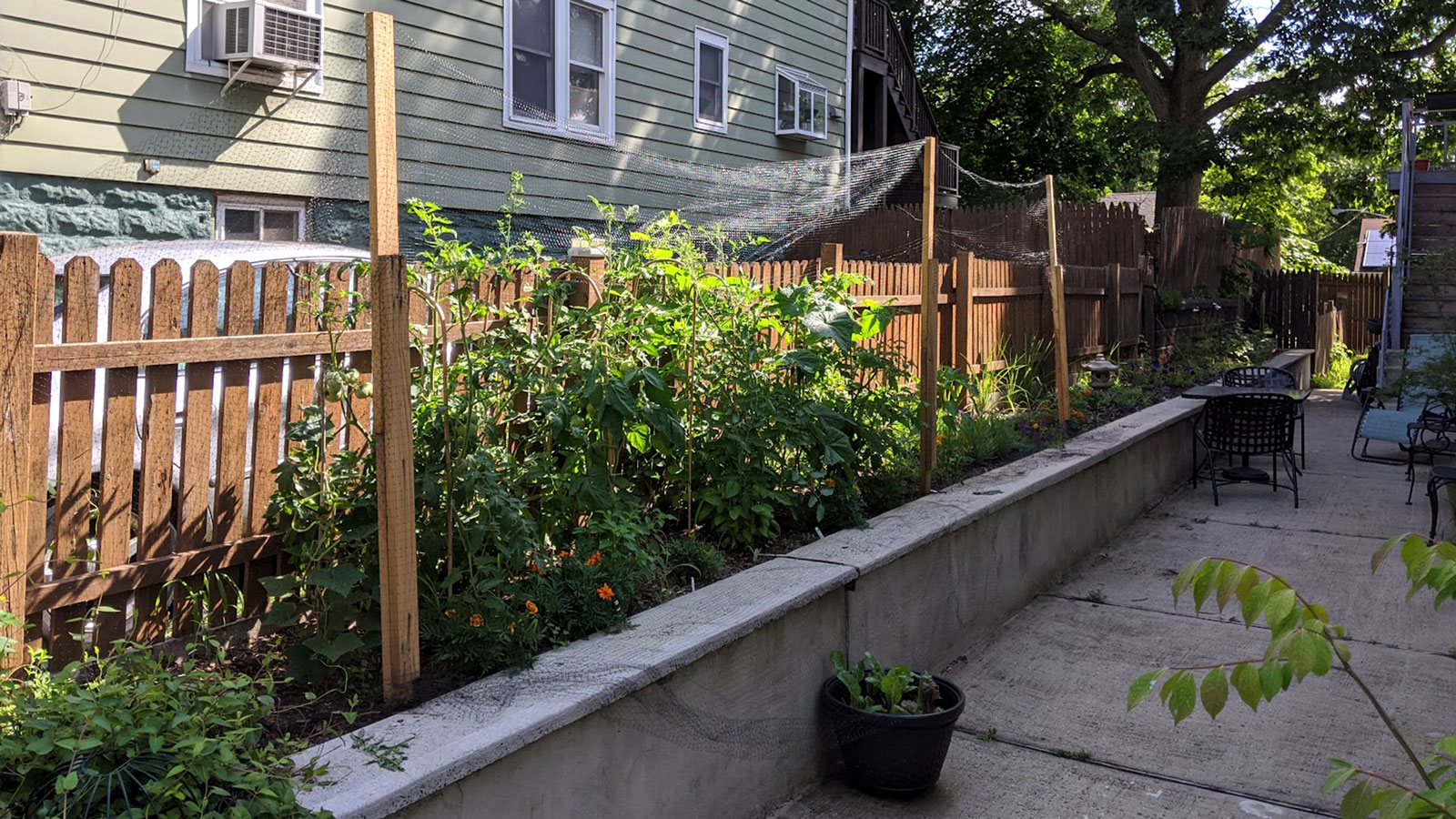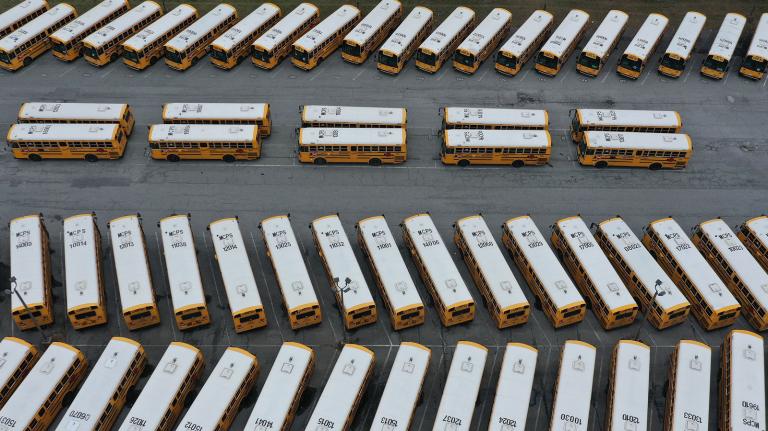Holly Caggiano is a distinguished postdoctoral fellow at Princeton University’s Andlinger Center for Energy and the Environment.
Most of us nurtured at least one pandemic-driven hobby in 2020, and mine, like so many others, started in a garden. My camera roll from that summer is full of greens, browns, and splashes of pink and red. April 22: the first seedlings sprouting in tiny cups. May 12: cucumber starts; the fresh mulch my partner and I laid in the previously neglected raised bed on the side of our two-family rental. May 14: sweet alyssum, marigolds, honey bees. June 25: the first (and only) strawberry. July is full of green tomatoes, bundles of herbs, the garden bed bursting at the seams with life. August, September — salsas, sauces, wood bowls of Jersey tomatoes. The last harvest before an early frost. If I scroll fast enough, I can see the sprouts and the flowers grow, blossom, and settle back into the earth in half a second.
My garden is a very small corner of the world, but it’s opened doors in my life. I grew up in suburban New Jersey. Though I’m from the Garden State, my mom was raised in the Bronx, and I have more childhood memories of walking in shopping malls than digging in the dirt. Through the garden, I’ve experienced catharsis, generosity, and connection. I joined a neighborhood Facebook group where we negotiate seed trades, share our harvest, and ask questions. Experienced gardeners give novices (like me) advice without judgment. We build intergenerational friendships. We all care for our own small corners. It does not feel like much, but together, this work is meaningful.
As a researcher working in the climate space, I know that we all need to dig in to avert catastrophic warming. When we seem to lose opportunities for transformative policy over and over again, hopelessness can creep in. Many of us are angry, alarmed, worried, grieving, and even feeling betrayed as fossil interests weaponize our desire for change by shifting responsibility for reducing our collective carbon footprint to consumers. My work has reassured me, however, that small is still beautiful, and that acting at a local scale can improve both climate outcomes and create vibrant communities. It is not time to abandon hope.
In my life and work, I’ve seen countless examples that bring joy and meaning to climate work. A few neighbors in a garden may not seem like a fix for the climate crisis, but research shows that even small civic stewardship groups play important roles in transforming and maintaining urban environments. As a member of the Warren St. Marks Community Garden in Brooklyn told our research team, “Stewardship means recognizing the gifts that you see before you, recognizing that others have protected it in the past, and holding hands with them from the past on into the future to preserve and enhance something that is precious.”
[For more on how finding joy in climate work can power solutions, check out Fix’s Joy Issue]
People who steward their local neighborhoods witness environmental transformation firsthand, and it makes them happier. One study that tracked community gardeners in New York City over a 10-year period found that they consistently cited joy and personal fulfillment as a result of their work.
In the chaos of the city, one organizer described a 7,000-square-foot rooftop community garden on the Upper West Side as “a larger gift to the environment, but also a personal gift. A reminder that a handful of committed people can make change.” “It’s so therapeutic to be involved in beautifying the world,” said a member of the Eighth Street Block Association in Park Slope, Brooklyn, which boasts numerous “Greenest Block in Brooklyn” awards. Each garden bed, park, and street tree form a mosaic of caretaking.
As a part of New York City’s Stewardship Mapping and Assessment Project, my colleague Laura Landau, along with researchers at the USDA Forest Service, spoke with stewards working with informal block associations, national nonprofits, and other groups. These caretakers not only improve their physical environment but also build strong bonds in the process. These bonds are especially important following disaster events, when communities depend upon existing social ties to network and organize in recovery. These crises compound — climate impacts, pandemics, persistent racial disparities.
Small is still beautiful, and acting at a local scale can improve both climate outcomes and create vibrant communities.
Laura writes about how one park conservancy supported the 2020 Black Lives Matter protests, providing the protesters with cold water (New York City’s heat at the time was literally deadly), personal protective equipment, and a safe place to congregate. A member of the conservancy told Laura, “This is a place we want you to protest.”
This work extends far beyond New York City — community gardeners across Puerto Rico, for example, helped to protect and feed their communities following Hurricane Maria’s devastation. Illegal vegetable gardens planted along curbs and traffic medians in the food desert of South Central Los Angeles have even inspired policy change — activist Ron Finley took on City Hall, eventually changing city rules to eliminate fines for growing food on municipal property. While civic stewards change the physical environment to withstand climate threats through efforts like increasing green space and stormwater retention, they also bring communities together in moments of crisis and in the everyday.
It feels saccharine, even dishonest, to frame this work as “every action counts” in a society fraught with inequity, where not everyone’s actions count the same. Planting street trees is not a substitute for a Green New Deal. Despite this, for the sake of care and connection, stewards choose to act in service to their communities even when this work might feel too small. As Ayana Elizabeth Johnson and Katharine Wilkinson argue in their hope-filled anthology All We Can Save, “Building community is a requisite foundation for building a better world.”
This year, I planted fewer vegetables and instead made lists of native species that attract pollinators. I can’t wait to see the concrete-framed bed erupt with color and hum with butterflies and bees. As I tend to the new plants, I find myself silently repeating the call-to-action of climate justice activist Sarahana Shrestha: “The future must be beautiful.” Through stewardship, we can envision this future and build it collectively. Instead of feeding hopelessness, maybe it is liberating that the most we can do is carve out our own corner and do our own small work.
The views expressed here reflect those of the author.
Fix is committed to publishing a diversity of voices, and we want to hear from you. Got a bold idea, fresh perspective, or insightful news analysis? Send a draft, along with a note about who you are, to opinions@grist.org.



